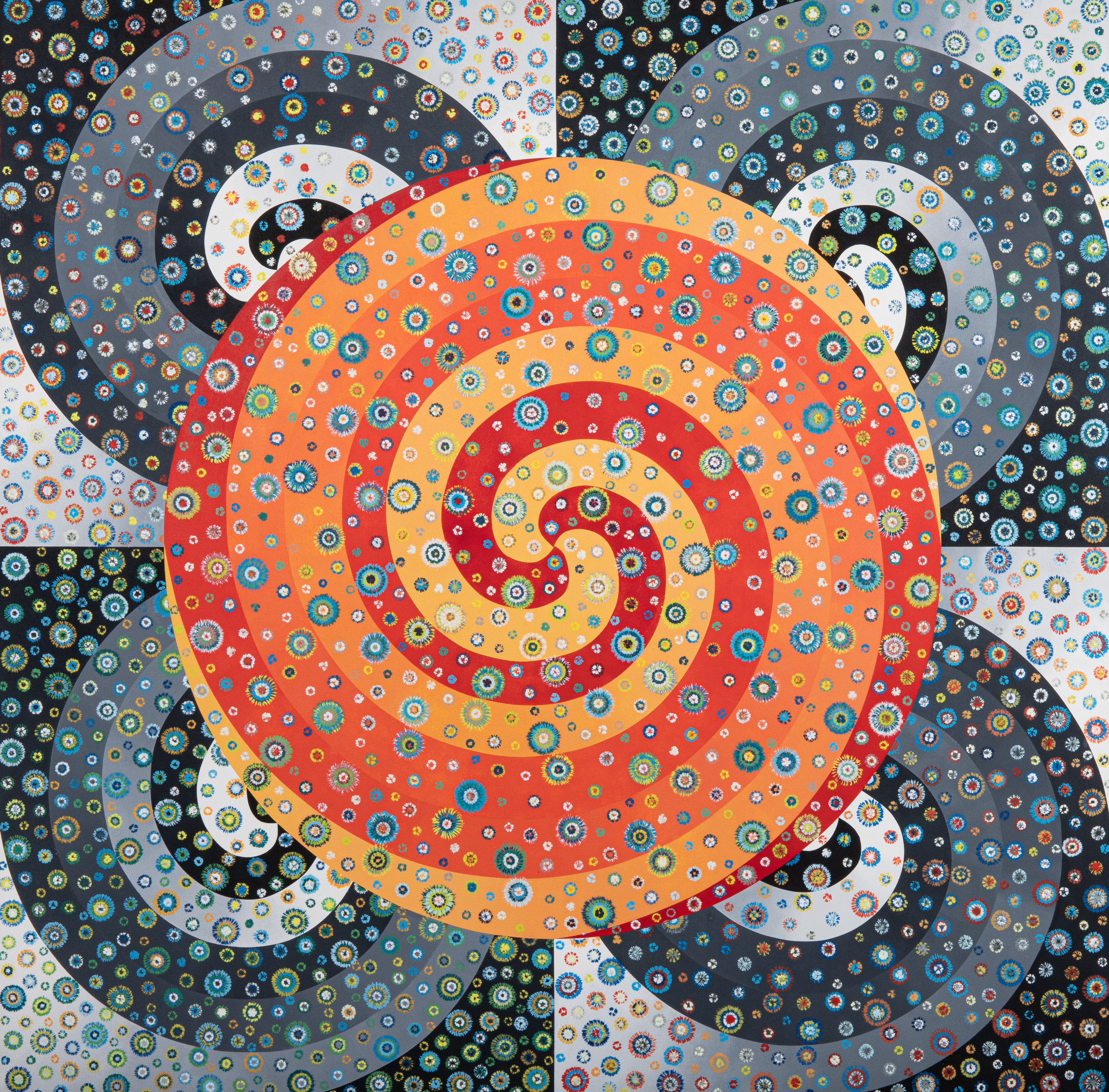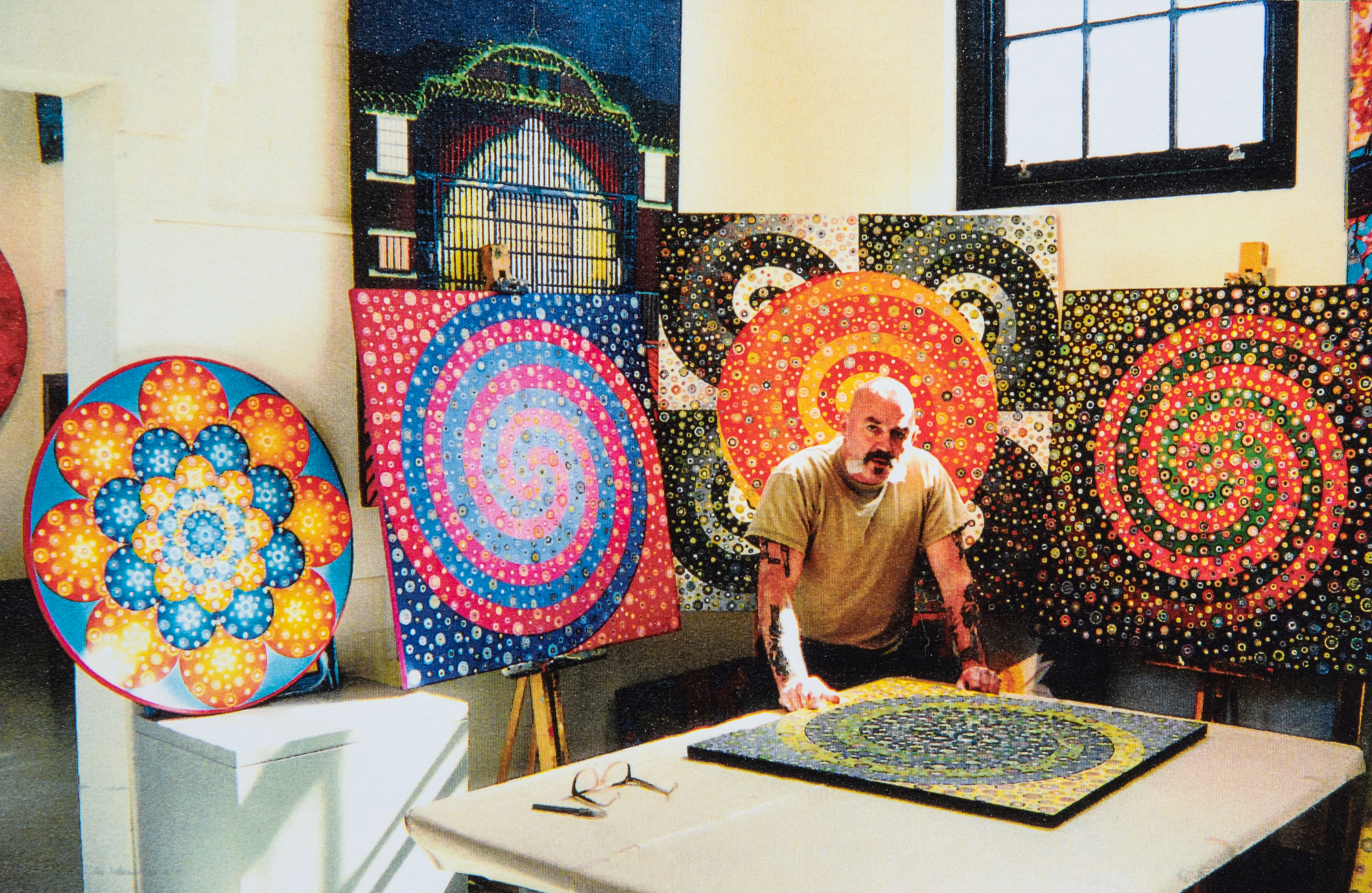Automatic language translation
Our website uses an automatic service to translate our content into different languages. These translations should be used as a guide only. See our Accessibility page for further information.
Terry is one of several inmates whose artworks have been purchased by the Department of Corrective Services.

Sue Paull talks about her former student, Terry Ayres
Sue Paull talks about her former student, Terry Ayres
My name's Sue Paul.
I was invited to set up an art class in maximum security at Long Bay in 1986.
Little did I know that I would actually develop, go on to develop the specialist art program, set up the Boom Gate Gallery at Long Bay and I also established the department's art collection.
I didn't realise I'd be there for 25 years.
I'd like to introduce you to the work of Terry Ayres. He was one of the 10 inmates in the art program.
I think I need to kind of just go back a little bit in so much as from time to time I would bring in some photographs just to show the inmates what I was doing. And there was one time when we were talking about spirals, so I bought in a photograph I'd taken of a fossilized shell imprint. And it was quite extraordinary because the next day Terry came up with the idea of creating these circles. And from there it developed into a theme which he carried on for like the next 18 months.
This is an example of one of the one of his works. Now although we were discussing spirals, this is actually concentric circles. Terry had the idea of creating these concentric circles using a tin can piece of string and a pencil. And I just want to show you the way that he developed the work.
So in the background you have the tone ranging from light to to dark, and that's starting to have a spatial effect with the work. But to accentuate what was happening with the depth of the work, he then added an overlay of these small circles. By changing the size and by changing the colour, he was then able to create a lot of depth and create the effect of a lot of them coming forward and they're all at different spatial depths.
So what I think is really successful in the way that he was approaching the work is that the viewers eye spends a lot of time exploring the whole surface.
Terry's work continued to evolve and there's one piece which the major work that he did with this piece, it's in the department's art collection and it's a very, very successful piece in terms of the composition having the the background spirals or concentric circles and just that overlay. So this is a little detail and it just shows you the complexity of of and detail in the work.
I took a photograph of Terry in his corner of the room, the corner of the art studio, surrounded by his spirals. And it brings me great joy every time I see this image because it's it's a real celebration of colour. And I find it, it's extraordinary that this is actually in a maximum security prison. And it had such an impact not only on viewers who were seeing his work, but had an enormous impact on the individual. And it was a turning point for Terry in terms of how he felt about himself, how he felt about others and and the direction he'd like to to take.
I should mention that all the participants in the art unit were encouraged to develop a really thorough portfolio of their work that would, I thought would help them if they wanted to try and gain access to tertiary education once they were released. And I thought also if they were looking for a job, it might help them to be able to actually show people what they had been doing. In Terry's case, it was very successful because he used his portfolio to help him gain entry into the National Arts School in Sydney. And yeah, that was incredibly rewarding experience for someone who'd never actually painted before in his life.
Before I move on from Terry's work, though, I'd like to show you another strand of what Terry was doing. Again, he was quite influenced by another photographer, a type of photography that I was doing.
I used to photograph parts of the prison and often at night and this was an interior shot I took
of the inside the entrance to the the maximum security prison where I worked. I showed this to the inmates to give them an
idea of the importance of light and tone and how how dramatic a sync or an object can be with good lighting. And Terry in true form thought, OK, I can do something like this. So Terry came up with the idea of painting parts of the prison environment, but transforming them through the use of colour. So they became like, almost like a celebration. He, he called this, this particular work was called the Long Bay Hilton Foyer.
And I took stages, 2 stages of the work to also give you an idea. In this work he's showing, it's showing all the flat under painting and then the overlays he's used modelling compound which are piped on, which are piped on to the to the surface of the work. And he told me later on that he got the idea of the piping from watching his grandmother when she used to decorate cakes.
These works of the prison in particular were went on to be selected for exhibition, number of exhibitions. This was a work, a catalogue from an exhibition we did at the Justice and Police Museum in Sydney.
And Terry became quite famous. In fact he was his this image and Terry was reproduced by the media in
many different forms. Prominent Sydney Morning Herald article, another one in the Herald we went on to produce. His work was used for publications, in this case the University of NSW, for one of the magazines, and he also did a range of cards for the Boom Gate Gallery. Just little greeting cards that the public could buy.
I should just also show you one other work which really shows the transformation of the prison. This was a holding cell, rather grim image initially when I took the photograph, but this is an absolute celebration of colour and light and this is another work which is in the department's collection.
Terry is a painter specialising in highly colourful works.
There are two distinct strands to Terry’s subject matter: non-objective circular compositions with overlays of colour, and creative depictions of prison interiors.

5=1 Spiral
Acrylic on canvas, 2001
Terry’s circular compositions, of which 5=1 Spiral is a prime example, were inspired by a black & white photo of a fossilised shell imprint.
Captivated by the image, Terry began experimenting with creative ways to create circular-like shapes on a stretched canvas. After many creative attempts, he discovered that using a can with a string and pencil attached, he was able to produce controlled concentric lines. He would then meticulously apply more paint, graduating in tonal value.
To add more interest and complexity to the painting, he painted layers of small radiating marks over the underlying tonal areas. Terry achieved this by splaying brushes of varying sizes, loading them with colour, and overlaying brush marks on top of one another. The technique has the effect of creating a sense of movement and spatial depth to the work.
The highly detailed paintings, of which he produced a prolific collection, required an intense level of focus. “It’s my big escape,” he told a journalist from the Sydney Morning Herald. “When I am painting I forget where I am. If they knew where I went every night they’d have me doing a million years for escape. Because I’m definitely not in this joint when I have a brush in my hand.”
The aesthetic beauty of these works and the skill evident in creating them, meant they were much admired, regularly sold through Long Bay’s Boomgate Gallery and were exhibited in several exhibitions, as well as being used to decorate the covers of various departmental publications.

Long Bay Hilton Foyer
Acrylic on canvas, Terry Ayres, 2001
Inspired by black and white documentary photographs of gates and bars with stark shadows taken inside the prison by his art teacher, Sue Paull, Terry began painting interior details of Long Bay Complex.
This example, Long Bay Hilton Foyer is based on an image of the gate entrance interior. However, unlike the stark black and white photo it emulates, Terry’s depiction of the same subject is intensely colourful.
“Most of my works are expressed in bright and vivid colours,” he explained in his artist statement for the exhibition Sentences. “Twenty years in gaol, living in a ‘dull and dreary’ caged atmosphere, trains the mind to see things in a more pleasant and subtle way, more appealing to the eye of the beholder.”
In contrast to the flat two-dimensional photograph, Terry added modelling compound to the acrylic paint to create a relief or ‘3D’ effect in some areas of his paintings. He devised his own way of piping the compound onto the canvas, influenced by what he had witnessed in childhood of his grandmother decorating cakes.
The work is striking and graphic, but also joyful, radiating a range of bright, uplifting colours. It was exhibited in various exhibitions including Sentences and Convictions, as well as being reproduced and written about in various media publications such as the Sydney Morning Herald.


Find out more about the Department of Corrective Services art collection.
Last updated:
We acknowledge Aboriginal people as the First Nations Peoples of NSW and pay our respects to Elders past, present, and future.
Informed by lessons of the past, Department of Communities and Justice is improving how we work with Aboriginal people and communities. We listen and learn from the knowledge, strength and resilience of Stolen Generations Survivors, Aboriginal Elders and Aboriginal communities.
You can access our apology to the Stolen Generations.